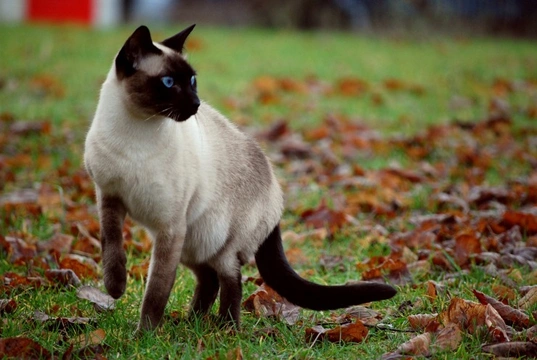Pets
Pets for studWanted petsBreedersAccessories & services
Knowledge hub
Support
Support & safety portal
Siamese cat colour genetics
The Siamese cat is one of the most popular pedigree cat breeds both in the UK and worldwide, and the breed has also spread widely in the creation of other breeds, including the Bengal, Tonkinese, and several others!
They also share a reasonable amount of their genetic makeup with various other Oriental breeds such as the Burmese and the Himalayan cat, and in fact, the Himalayan gene is one of the main elements that dictate why the Siamese cat looks like it does, and why they can be seen in the colours that they are.
In this article, we will look at the genetics of the Siamese cat’s colour and why Siamese cats appear the way that they do-and how the Siamese colour is determined within litters. Read on to learn more.
The basics of genes and chromosomes
Genes and chromosomes are referred to as “the building blocks of life,” and are responsible for virtually every element of a cat’s traits and appearance, Genes and chromosomes are inherited from the parent cats, and chromosomes come in pairs, with each cat having nineteen pairs.
Chromosomes are constructed of genes, and each of the nineteen chromosome pairs consist of one gene from each parent cat. Each of these genes in turn determines a feature or set of features present within the cat itself-such as the sex chromosomes, which consist of XX for a female cat (the cat inherits an X gene from both of their parents in that chromosome pair) or XY for males (the cat inherits an X chromosome from one parent, and a Y chromosome from the other).
The Himalayan gene
When it comes to the colour of the Siamese cat, the Himalayan gene mentioned earlier comes into play, alongside of the usual colour genes seen in cats. The Himalayan gene causes a mutation of colour that leads to what is known as partial albinism-although this does not mean that it will produce an albino cat! Partial albinism leads to a dilution or changing of the true colour within the gene, but this gene itself is recessive.
Recessive means that if only one Himalayan gene is inherited (as from one parent cat but not the other) the gene will not express-in order for a cat to be a Siamese, they need to inherit two copies of the Himalayan gene, one from each parent.
Mating a Siamese cat to a non-Siamese cat will mean that only one copy of the Himalayan gene will be present, and the resultant offspring will not have a fully Siamese look, colour or pedigree.
The Himalayan gene is responsible for a significant part of the Siamese cat’s appearance when it comes to their colouring, because of the effect that it has on the cat’s true colour genes in terms of its partial albinism.
Seal point Siamese cats, which is the traditional and original colour for the breed before other colour variants became recognised, as actually black on a genetic level-but the presence of the Himalayan gene and the effect that this has on the cat’s true colour genes lead to its dilution, meaning that the black pigment present is not fully expressed, leading to the dark seal point brown shade.
The Himalayan gene can express itself in the breed in other ways too-stereotypically, historical Siamese cats are often viewed as being cross-eyed, and while this trait has largely been bred out of the breed, the Himalayan gene was actually the cause of this too.
Siamese cat colours
The traditional colour of the Siamese cat breed, and at one point the only accepted true colour is Seal point, which means a cat that has very dark brown colourpoints, as explained above, as an expression of the effect of the Himalayan gene on the gene for black colouring.
The next variation from this is the chocolate point Siamese cat, which is genetically very similar to the seal point colouration, except that instead of inheriting two dominant black genes, one form each parent (a BB expression) that are then diluted by the Himalayan gene, the cat inherits two “small” black genes, or a bb expression, leading to a further lightening and dilution of the base black shade.
The blue point Siamese receives the same small bb black expression as the chocolate point, but as a dilute expression rather than a dense one, giving the cat’s colourpoints a medium grey appearance that is referred to as blue.
Finally, the lilac point Siamese sees a further dilution of the black gene, further lightening the grey of the colourpoints to the lilac shade.
Other variations of the Siamese colour, not all of which are recognised by every breed organisation, are simply further expressions and dilutions of the same core black colour genes, influenced by the Himalayan gene.
Why do Siamese cats have colourpoints?
Siamese kittens are born pure white, and their eventual colourpoints will only become evident as they grow older. This is because the colourpoints of the Siamese cat react to heat-when the body temperature is warm and constant, as it is in the womb, the colourpoints do not develop.
When the kittens are born, the outside temperature affects the extremities, ie., the legs, tail and face-while the cat’s trunk maintains a consistent temperature, and stays pale in colour.
Female Siamese cats that are spayed will sometimes develop a slightly darker patch of fur regrowth over the area of the body that was shaved for the spay procedure, as the shaving of the fur means that that area of the body will be cooler until the hair grows back!



